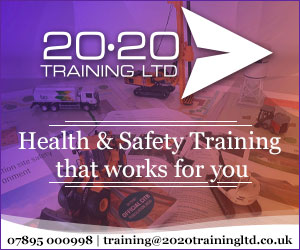Telephone
Click to view
Contact
steve Valentine
Email
Address
Newton Farm Industrial Estate
Ashchurch
Ashchurch
Tewkesbury
GL20 7BE
About Vally Plant Training Ltd Abrasives Wheels Training
Nearly half of the workplace accidents involving abrasive wheels are due to an unsafe work system or operator error. This indicates that many of these incidents can be avoided if the risks of working with abrasive wheels are clearly communicated, and the correct safety measures are adopted, Abrasive Wheels Training will eliminate most accidents with Abrasive Wheels.
With the appropriate Abrasive wheels training in place, you could significantly reduce the risk of an injury such as friction burns, crushed fingers and loss of eyesight which are the most common amongst abrasive wheel operators with the misuse of machines.
This Abrasive Wheels Training Course is designed to assist in reducing the risk of injury for anyone who uses abrasive wheels at work. It guides you through the different types of abrasive wheels, how to identify and store them, how they should be used safely, and how they should be inspected prior to use. Our Abrasive Wheels Training will give all candidates hands-on practical training.
Definition of Abrasive Wheels
Abrasive wheels are tools used for cutting, grinding, and polishing various materials. They are made from abrasive particles, like grit, bonded together to form a solid wheel. When these wheels spin at high speeds, they can shape or finish different surfaces effectively.
Types of Abrasive Wheels Commonly Used in Industry
Bonded Abrasive Wheels:
These are made by combining abrasive particles with a bonding material to form a solid wheel. Bonded abrasive wheels are typically used for tasks like grinding, cutting, and finishing metal or stone.
Coated Abrasive Wheels:
These have an abrasive layer attached to a backing material, like paper or cloth. Coated abrasive wheels are commonly used for sanding and smoothing surfaces, often in woodworking or metalworking.
Abrasive wheel training is essential for learning how to use these tools safely and effectively. Understanding the different types of abrasive wheels and their applications can help you choose the right wheel for your job, ensuring efficiency and safety.
Importance of Proper Training
Overview of the Risks Associated with Improper Use:
Using abrasive wheels without proper training can be very dangerous. The importance of proper training cannot be overstated when it comes to the safe and effective use of abrasive wheels. Improper use of abrasive wheels can lead to serious accidents, such as wheel breakage, which can cause flying debris and severe injuries. Other risks include cuts, burns, and eye injuries from sparks or fragments. Not knowing how to handle the equipment properly can also result in damaged materials and inefficient work, leading to wasted time and resources.
Benefits of Trained Versus Untrained Usage
Undergoing abrasive wheel training is crucial for several reasons:
Safety:
Trained individuals know how to handle abrasive wheels safely, reducing the risk of accidents and injuries. They learn to inspect the wheels for damage, choose the right type of wheel for the job, and use protective gear correctly.
Efficiency:
Training ensures that users understand how to use abrasive wheels effectively, leading to faster and more accurate work. Trained users can achieve better results with less effort and time.
Cost-Effectiveness:
Proper training helps prevent damage to the wheels and the materials being worked on, saving money on replacements and repairs. It also minimizes downtime due to accidents or improper usage.
Compliance:
Many industries require certification for using abrasive wheels. Completing abrasive wheel training ensures compliance with safety regulations and industry standards, which is essential for legal and insurance purposes.
In summary, abrasive wheel training equips users with the knowledge and skills needed to use abrasive wheels safely and efficiently, making the workplace safer and more productive.
 UK
UK Ireland
Ireland Scotland
Scotland London
London















